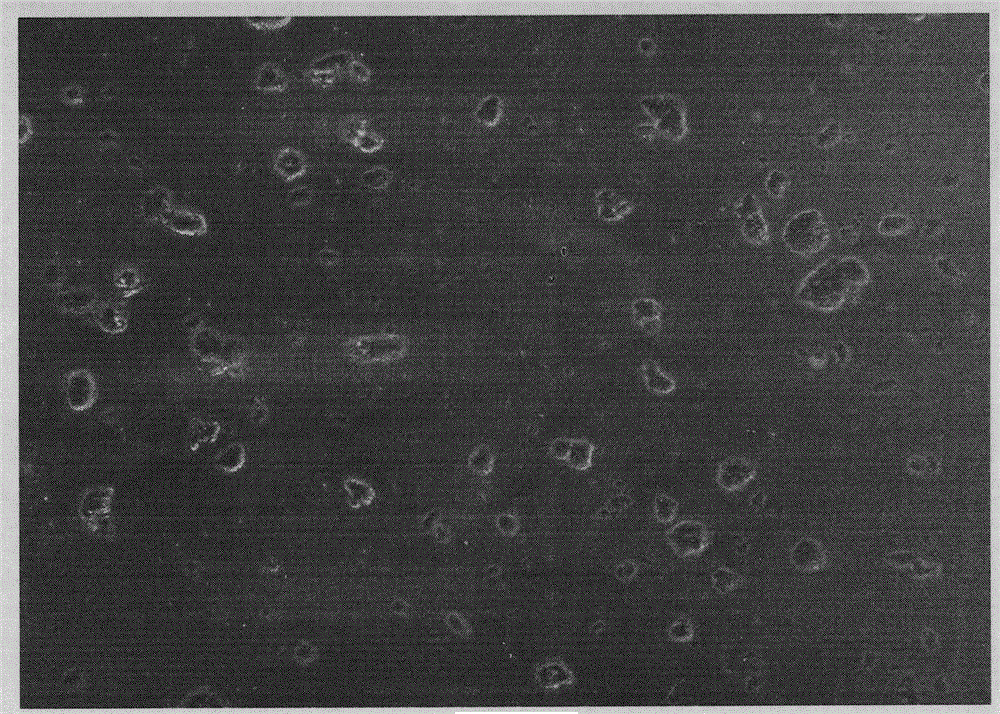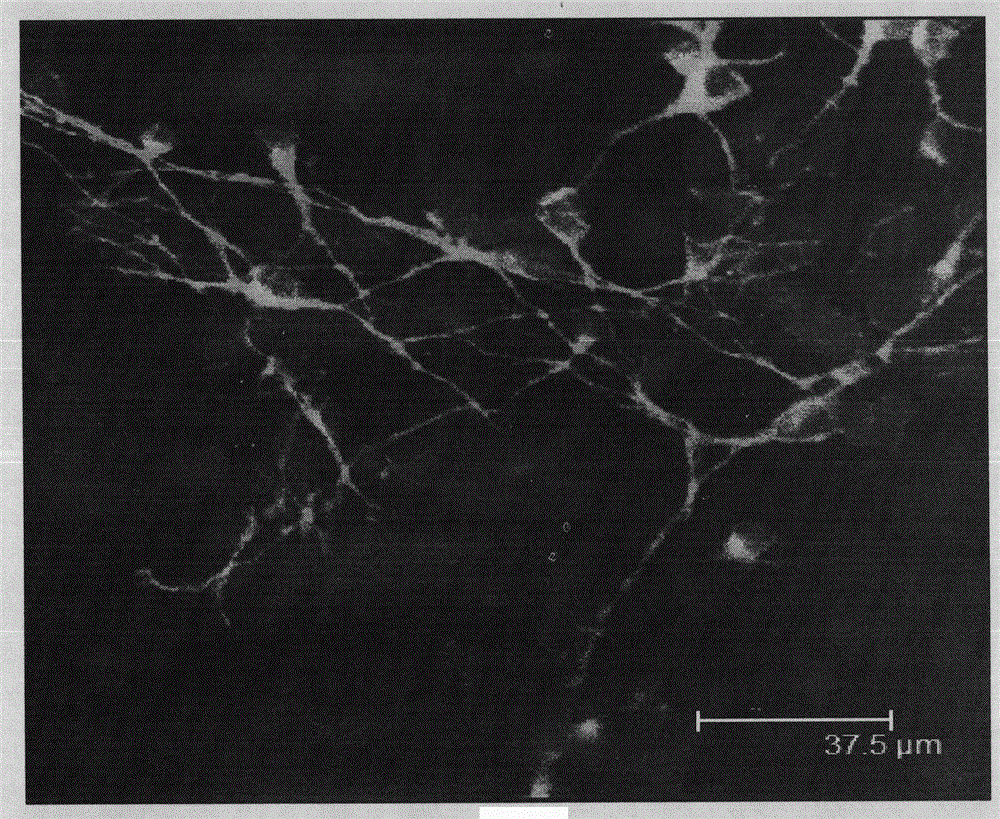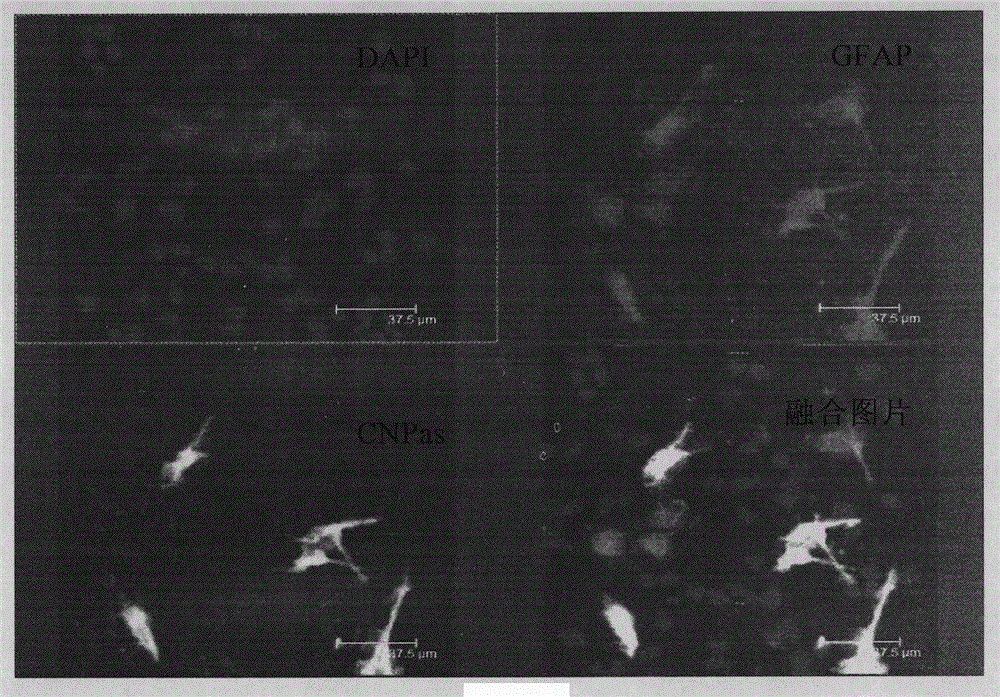A method for preparing tissue-engineered spinal cord using skin-derived progenitor cells
A technique for tissue engineering spinal cord and skin, applied to animal cells, vertebrate cells, artificial cell constructs, etc., can solve problems such as poor repair effect, inability of transplanted cells to play their role effectively, inappropriate timing of transplantation, etc., to achieve The effect of promoting cell proliferation
- Summary
- Abstract
- Description
- Claims
- Application Information
AI Technical Summary
Problems solved by technology
Method used
Image
Examples
Embodiment 1
[0022] Embodiment 1 separates SKPs
[0023] After routine disinfection of the inner thigh or back skin of patients with spinal cord injury, anesthetized with 1% lidocaine, the size is about 0.5×4cm 2 full-thickness skin. Alcohol disinfection, cut the skin and put it in 0.25% trypsin to digest overnight. The next day, after washing with Hank’s solution, the epidermis and subcutaneous tissue were removed, the dermal tissue was cut into cell sheets, crushed and blown into a cell suspension, filtered and inoculated into a culture bottle containing DMEM medium. After 2 hours, the suspended cells were centrifuged and transferred to a medium suitable for the growth of SKPs (DMEM-F12, 3:1, containing 40ng / mlFGF2, 20ng / mlEGF). After culturing for about 7 days, SKPs cells growing like suspension clones could be seen. , figure 1 .
[0024] Cell immunofluorescence histochemistry was used to detect whether SKPs differentiated into neurons and oligodendrocytes after induction, and the p...
Embodiment 2
[0025] Embodiment 2 SKPs rapid expansion
[0026] Usually, the growth of primary cells is relatively slow. In order to obtain a sufficient amount of cells within the optimal time window for transplantation, this example studies the promotion of proliferation of SKPs by different growth factors. According to literature research, a variety of cytokines are involved in the regulation of stem cell proliferation, mainly basic fibroblast growth factor-2 (FGF-2), epidermal growth factor (epidermal growth factor, EGF), leukemia inhibitory factor (leukemia inhibiting factor, LIF) ), db-cAMP, insulin growth factor-1 (insulin growth factor-1, IGF-1), insulin growth factor-2 (insulin growth factor-2, IGF-2), platelet-derived growth factor (Plated derived growth factor, PDGF), brain-derived Neurotrophin (brainderivedneurotrophicfactor, BDNF), neurotrophin-3 (neurotrophin-3, NT-3), nerve growth factor-β (nervegrowthfactor-β, NGF-β), bone morphogenetic protein-4 (bonemorphogenticprotein4, BM...
Embodiment 3
[0031] Example 3 Optimization of SKPs differentiation neuron and oligodendrocyte differentiation conditions
[0032] The local microenvironment of spinal cord injury is not conducive to the differentiation of transplanted stem cells into neurons and other repair cells. Therefore, it is necessary to first explore the conditions that increase the differentiation of stem cells into neurons and other repair cells, and then combine these conditions in the tissue engineered spinal cord to improve stem cell transplantation. repair effect.
[0033] In vitro experiments were performed to observe the conditions for SKPs to differentiate into neurons and oligodendrocytes. There are three kinds of media for inducing neuron differentiation: (1) 5% FBS; (2) 6ng / ml retinoic acid; (3) 10ng / ml BDNF+10ng / mlNT3+6ng / ml retinoic acid+5%FBS. Two kinds of induction media were used for induction to Schwann cells: (1) 5% FBS; (2) 5% FBS+10 ng / ml Neuregulin. The results showed that the probability of...
PUM
 Login to View More
Login to View More Abstract
Description
Claims
Application Information
 Login to View More
Login to View More - R&D
- Intellectual Property
- Life Sciences
- Materials
- Tech Scout
- Unparalleled Data Quality
- Higher Quality Content
- 60% Fewer Hallucinations
Browse by: Latest US Patents, China's latest patents, Technical Efficacy Thesaurus, Application Domain, Technology Topic, Popular Technical Reports.
© 2025 PatSnap. All rights reserved.Legal|Privacy policy|Modern Slavery Act Transparency Statement|Sitemap|About US| Contact US: help@patsnap.com



